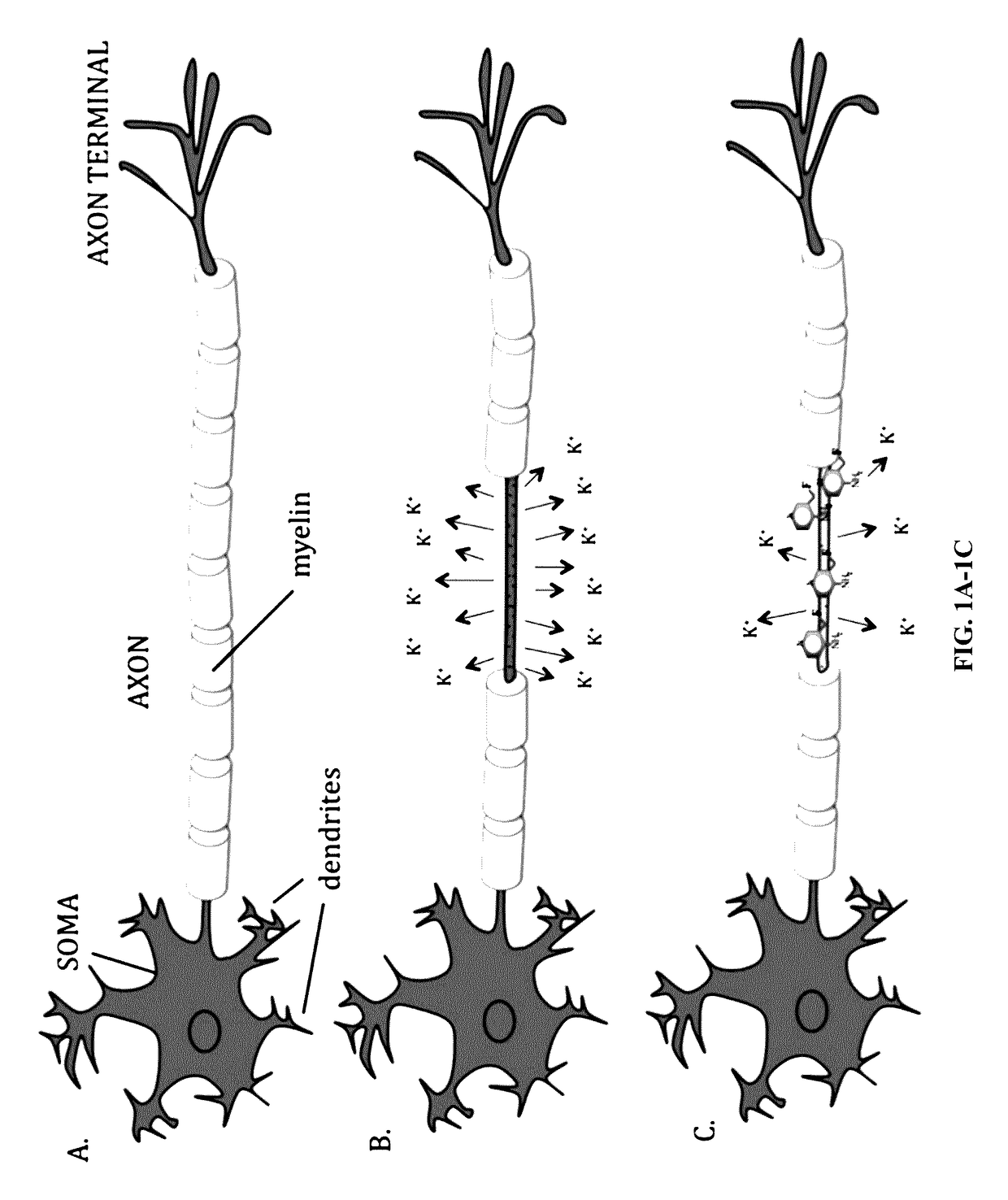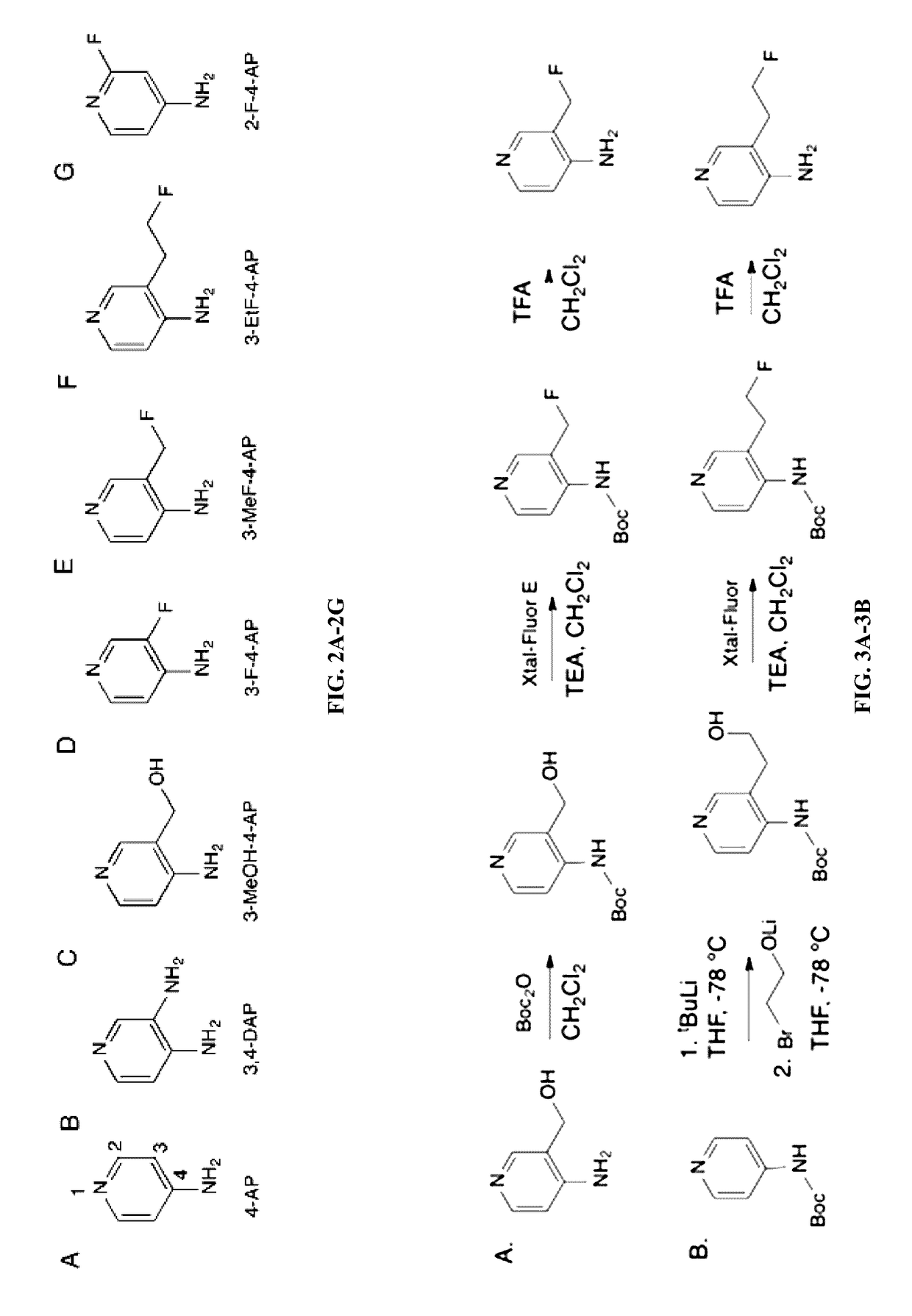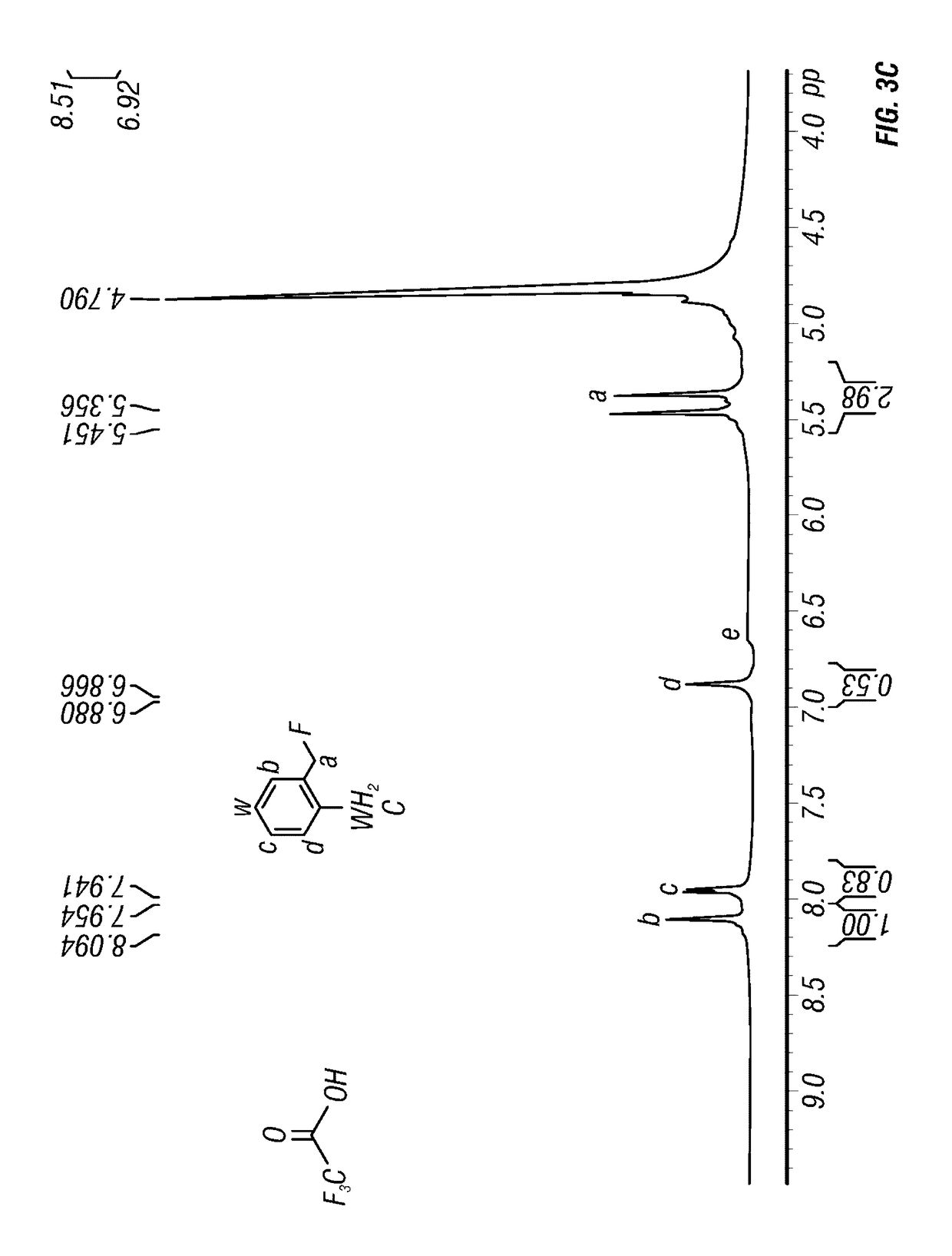Use of fluorinated derivatives of 4-aminopyridine in therapeutics and medical imaging
a technology of 4-aminopyridine and derivatives, which is applied in the field of biological and chemistry of medicine, can solve the problems of loss of the myelin sheath that normal covers the axon, aberrant leakage of potassium ions from the axon, and improper impulse conduction
- Summary
- Abstract
- Description
- Claims
- Application Information
AI Technical Summary
Benefits of technology
Problems solved by technology
Method used
Image
Examples
example 1
Synthesis of Fluorinated Derivative of 4-AP
[0200]4-AP (FIG. 2A) is a relatively specific blocker of voltage-gated K+ channels (Kv1 family). 4-AP is a membrane permeable molecule that binds to the intracellular mouth of the K+ channel blocking ionic currents (Sherratt et al., 1980). In demyelinated axons these channels are exposed and easily accessible to the drug. For this reason, the inventors believe that labeling 4-AP with a positron emitting radionuclide will enable imaging of demyelinated regions.
[0201]Furthermore, since Kv1 channels are upregulated 2-4 fold in demyelinated animals such as shiverer mice and upregulation of Kv1 channels in demyelinated axons suggests greater signal, the inventors expect that the signal proceeding from demyelinated axons will be greater.
[0202]A common approach in the design of PET radioactive tracers is to replace a hydrogen (H), hydroxyl (OH) or methyl (CH3) group with fluorine-18 (Ametamey et al., 2008). Fluorine-18 is the preferred radionuclid...
example 2
Confirm Binding to Potassium Channels
[0205]In order to confirm that the fluorinated 4-AP derivatives maintain the ability to block K+ channels and select the most suitable compound for imaging studies, the inventors measured inhibition of K+ currents in Shaker channels (Kv1.2) using cut-open oocyte voltage clamp (Stefani and Bezanilla, 1998) (FIGS. 5A-5B). Using the cut-open oocyte voltage clamp studies to screen compounds to determine their potency towards Kv1 channels was previously described in Starace and Bezanilla et al. (2004).
[0206]Remarkably, 3-fluoro-4-aminopyridine (3F-4AP) has very similar affinity to 4-AP for K+ channels. 3-fluoromethyl-4-aminopyridine (3MeF-4AP) is similar to 3-methanol-4-aminopyridine (3MeOH-4AP) and around 10-fold less potent than 4-AP. 3-fluoroethyl-4-aminopyridine (3EtF-4AP) and 2-fluoro-4-aminopyridine (2F-4AP) are at least a hundred fold-less potent than 4-AP. Based on these results, 3F-4AP and 3-MeF-4AP are the preferred molecules for imaging and...
example 3
In Vivo Effects of Fluorinated 4-AP Derivative
[0210]A consequence of excessive K+ channel blockage is the advent of seizures. 4-AP is known to cause seizures in mice at high doses. The inventors tested some 4-AP derivatives described herein and compared them to 4-AP in their ability to cause seizures (Table 1).
[0211]The fact that only the molecules that are active by cut-open voltage clamp are able to cause seizures strongly suggests that these molecules are targeting K+ channels receptors in vivo.
[0212]In addition, the inventors noticed that Shiverer mice, which harbor a mutation on myelin basic protein and suffer from demyelination of the CNS, appear to be less sensitive to 4-AP induced seizures. Previous studies have shown that Shiverers and other demyelinated mice display an abnormal localization pattern of Kv1 channels and a 2-4 fold increase in expression of Kv1.1 and Kv1.2 channels in axons (Wang et al., 1995). The inventors believe that the higher expression of Kv1 channels ...
PUM
| Property | Measurement | Unit |
|---|---|---|
| temperature | aaaaa | aaaaa |
| temperature | aaaaa | aaaaa |
| temperature | aaaaa | aaaaa |
Abstract
Description
Claims
Application Information
 Login to View More
Login to View More - R&D
- Intellectual Property
- Life Sciences
- Materials
- Tech Scout
- Unparalleled Data Quality
- Higher Quality Content
- 60% Fewer Hallucinations
Browse by: Latest US Patents, China's latest patents, Technical Efficacy Thesaurus, Application Domain, Technology Topic, Popular Technical Reports.
© 2025 PatSnap. All rights reserved.Legal|Privacy policy|Modern Slavery Act Transparency Statement|Sitemap|About US| Contact US: help@patsnap.com



